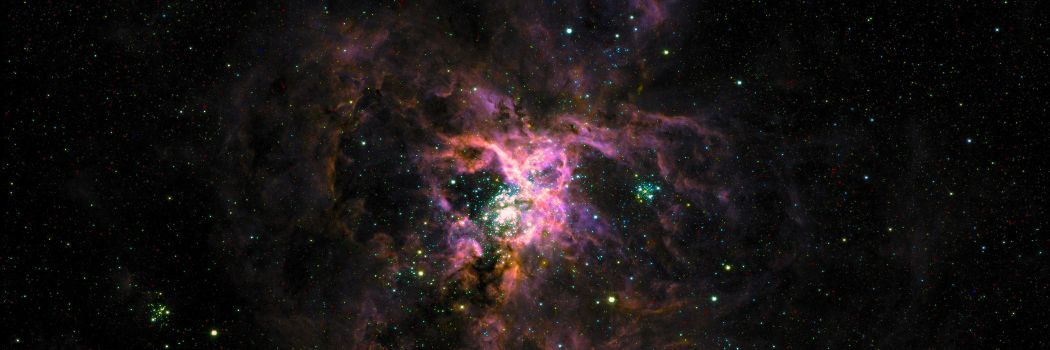21.04.2023

Our astronomers are part of an international team behind the successful first research flight of an innovative balloon-borne telescope that will investigate the mystery of dark matter.
The Superpressure Balloon-borne Imaging Telescope (SuperBIT) has been flown to the edge of space by a helium balloon the size of a football stadium.
SuperBIT has already taken its first images on this flight, showing the “Tarantula Nebula” - a neighbourhood of the Large Magellanic Cloud where new stars are being born, and the collision between the “Antennae galaxies” NGC 4038 and NGC 4039.
Dark matter
The science goal for this first flight is to measure the properties of dark matter, a heavy but invisible type of material. Dark matter is all around us but poorly understood.
Although dark matter is invisible, SuperBIT will map where it is by the way it bends passing rays of light, a technique known as gravitational lensing.
The telescope will test whether dark matter particles can bounce off each other, by mapping the dark matter around clusters of galaxies that happen to be colliding with their neighbours.
Various theories about dark matter suggest that, during a collision, some dark matter might either slow down, spread out, or get chipped off.
The researchers say that if they can map dark matter leaving the collision, they could finally start to learn what it’s made from.
High-resolution images
SuperBIT launched from Wānaka, New Zealand (Aotearoa).
Carried by seasonally stable winds, it will circumnavigate the southern hemisphere several times on its three-month flight - imaging the sky all night, then using solar panels to recharge its batteries during the day.
Flying at 33.5km altitude, above 99.5 per cent of the Earth’s atmosphere, SuperBIT takes high-resolution images like those of the Hubble Space Telescope, but with a wider field of view.
SuperBIT cost about £4.1million/$5million USD, almost 1,000 times less than an equivalent satellite.
Helium is cheaper than rocket fuel and the ability of SuperBIT to return to Earth by parachute meant the team could tweak its design over several test flights and can continue to upgrade the telescope.
Find out more
-
Durham’s lead researcher on SuperBIT is Professor Richard Massey, in our Department of Physics. Richard is a member of Durham’s Institute for Computational Cosmology and Centre for Extragalactic Astronomy.
-
Our Department of Physics is a thriving centre for research and education. Ranked 2nd in the UK by The Guardian University Guide 2023, and in the World Top 100 in the QS World University Rankings by Subject 2023, we are proud to deliver a teaching and learning experience for students which closely aligns with the research-intensive values and practices of the University.Feeling inspired? Visit our Physics webpages to learn more about our postgraduate and undergraduate programmes.
-
SuperBIT is a collaboration between Durham University the University of Toronto, Canada, Princeton University, USA, and NASA. You can follow SuperBIT’s flight status on NASA’s website here.
-
Funding for the SuperBIT mission has been provided by NASA, the Canadian Space Agency, and the Royal Society.
Main image: A false-colour image taken by the SuperBIT telescope soon after launch in visible and ultra-violet light of the "Tarantula Nebula” - a neighbourhood of the Large Magellanic Cloud where new stars are being born. Credit: SuperBIT.
Quelle: Durham University

